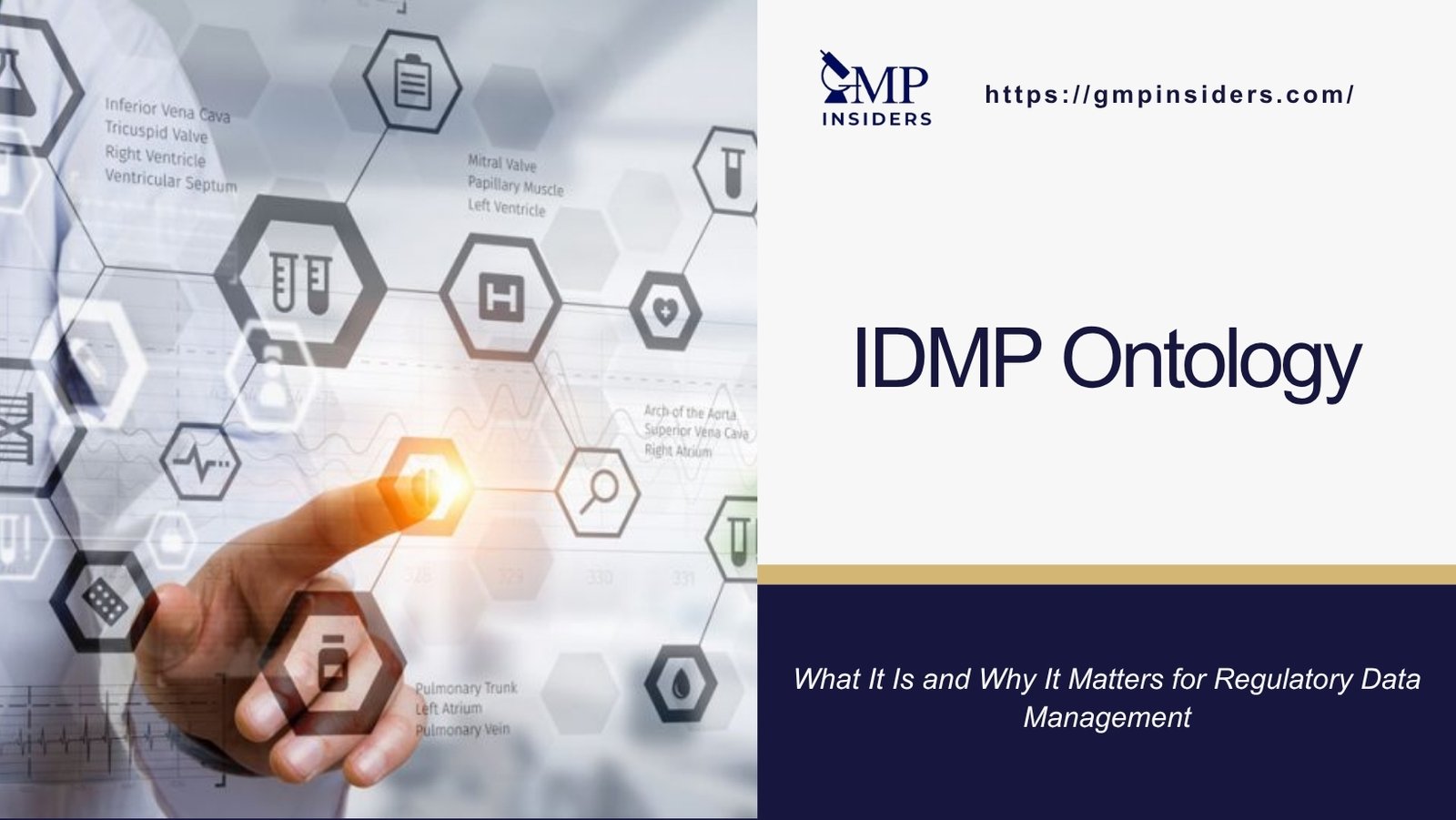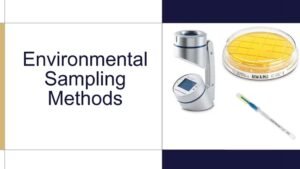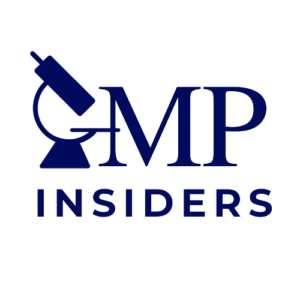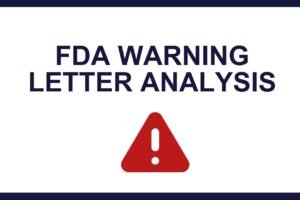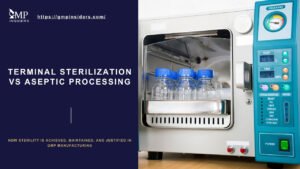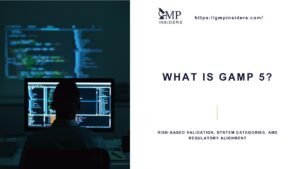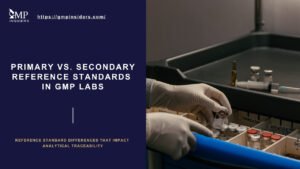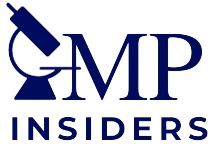As pharmaceutical organizations prepare for regulatory changes, such as the implementation of the EU’s IDMP standards, many are hearing new terms like “ontologies” enter the conversation, sometimes without much explanation. One term gaining momentum is the IDMP Ontology. But what is it, and how could it benefit your organization?
This article gives you a practical introduction to the topic and helps you understand how the IDMP Ontology could fit into your regulatory data landscape.
What Is the IDMP Ontology?
At its core, the IDMP Ontology is a method for organizing and linking data related to medicinal products, particularly the types of data specified by the ISO IDMP standards (Identification of Medicinal Products). These include data about substances, products, dosage forms, packaging, and more.
Unlike traditional data models (such as spreadsheets or simple databases), an ontology adds meaning and relationships to the data. It informs systems, for example, that a “Manufactured Dose Form” is not merely a label, but is also related to both a substance and a pharmaceutical product, and that this relationship is significant for regulatory submissions.
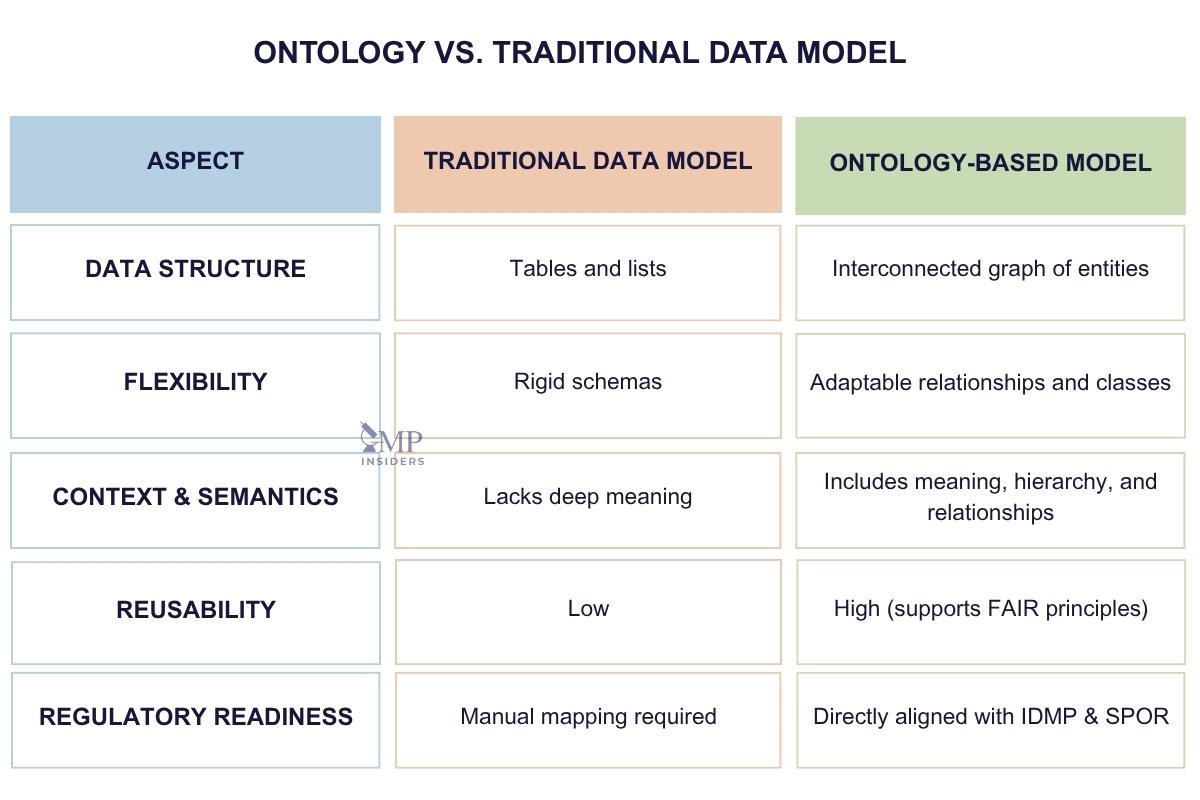
The IDMP Ontology is being developed through collaborative efforts, most notably by the Pistoia Alliance, to support regulatory compliance and long-term interoperability.
Why Does It Matter for Regulatory Data Management?
The IDMP framework is not just about having the right data; it’s about structuring that data so that it can be reused, understood consistently, and submitted efficiently across regulatory systems.
Here’s where the ontology helps:
- Standardization: Aligns terminology and concepts across different departments and affiliates.
- Data Quality: Prevents inconsistencies in how products, ingredients, or pack sizes are defined and used.
- Efficiency: Reduces manual effort in preparing data for regulatory submissions, such as those required by the EMA’s SPOR database or the PMS.
- Traceability: Helps track how changes in one part of the data (e.g., a substance name) affect other records or submissions.
Diverging IDMP implementations across companies and regions create silos and costly point-to-point integrations. The IDMP Ontology addresses this by providing a universal model that bridges people, processes, and systems, enabling consistency across all functions.
SEE ALSO: GMP Regulatory Bodies
How Can It Be Used in Your Organization?
You don’t need to overhaul your systems to benefit from ontology-based thinking. Instead, consider the following practical uses:
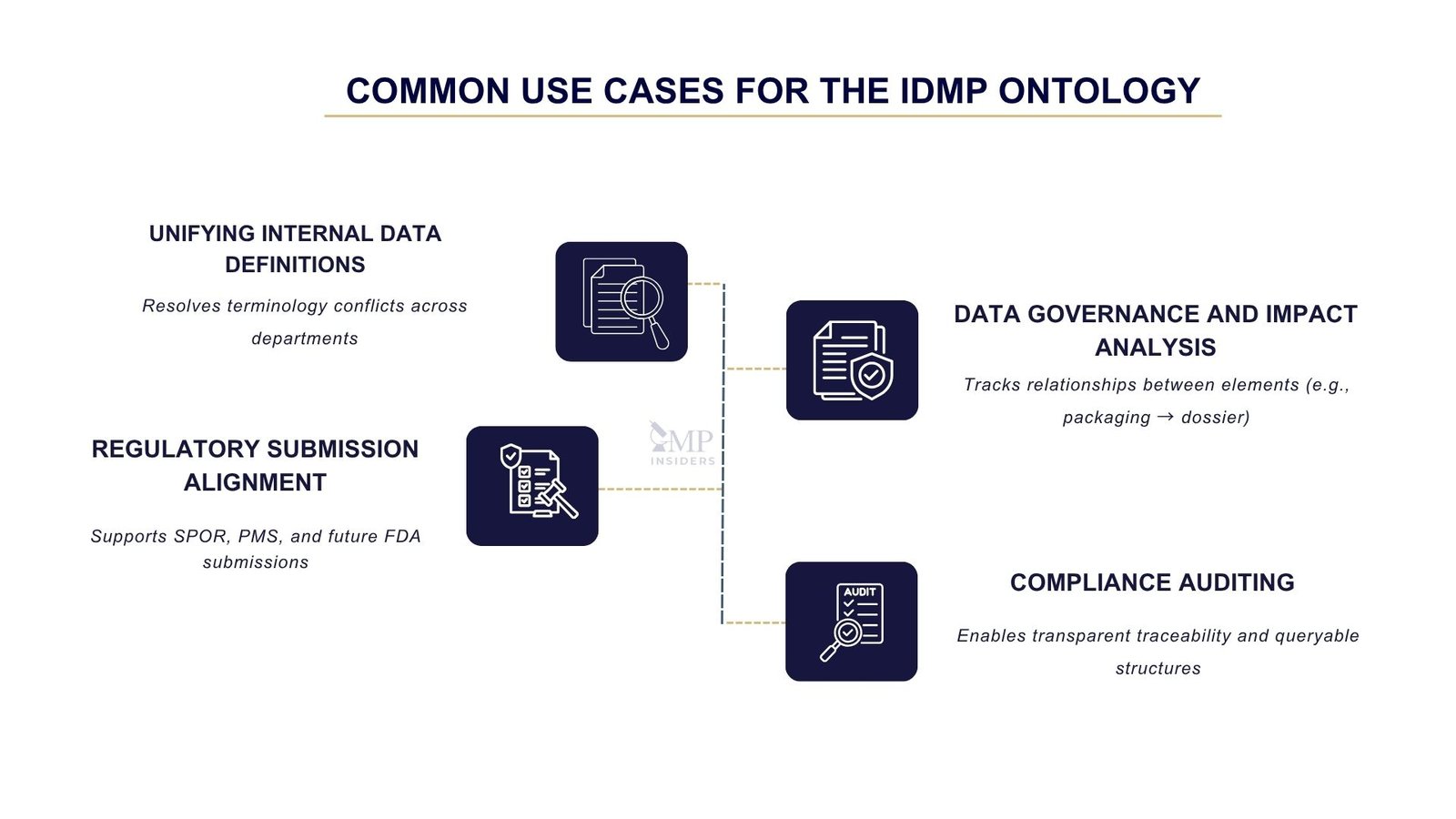
1. Unifying Data Definitions Across Teams
Your regulatory, quality, and manufacturing teams may all use the same terms, such as “product” or “dose form,” but they may mean different things. An ontology helps define these concepts precisely and consistently.
2. Preparing for SPOR and IDMP Submissions
As regulators move toward structured data submissions, the IDMP Ontology offers a reference model that can help you align your internal product data with external requirements.
3. Improving Data Governance
By making relationships between data elements explicit, the ontology supports better data stewardship. For example, it helps answer questions like: “If I update this packaging material, what regulatory documents or records are impacted?”
Technical Scope & Architecture
Understanding the structure of the IDMP Ontology is crucial for recognizing how it can facilitate regulatory compliance and data consistency at scale.
Based on FAIR Principles
The IDMP Ontology is built according to FAIR data principles: Findable, Accessible, Interoperable, and Reusable. These principles support long-term data consistency across departments, systems, and regulatory bodies. The goal is to make medicinal product data usable across various platforms without rework or interpretation gaps.
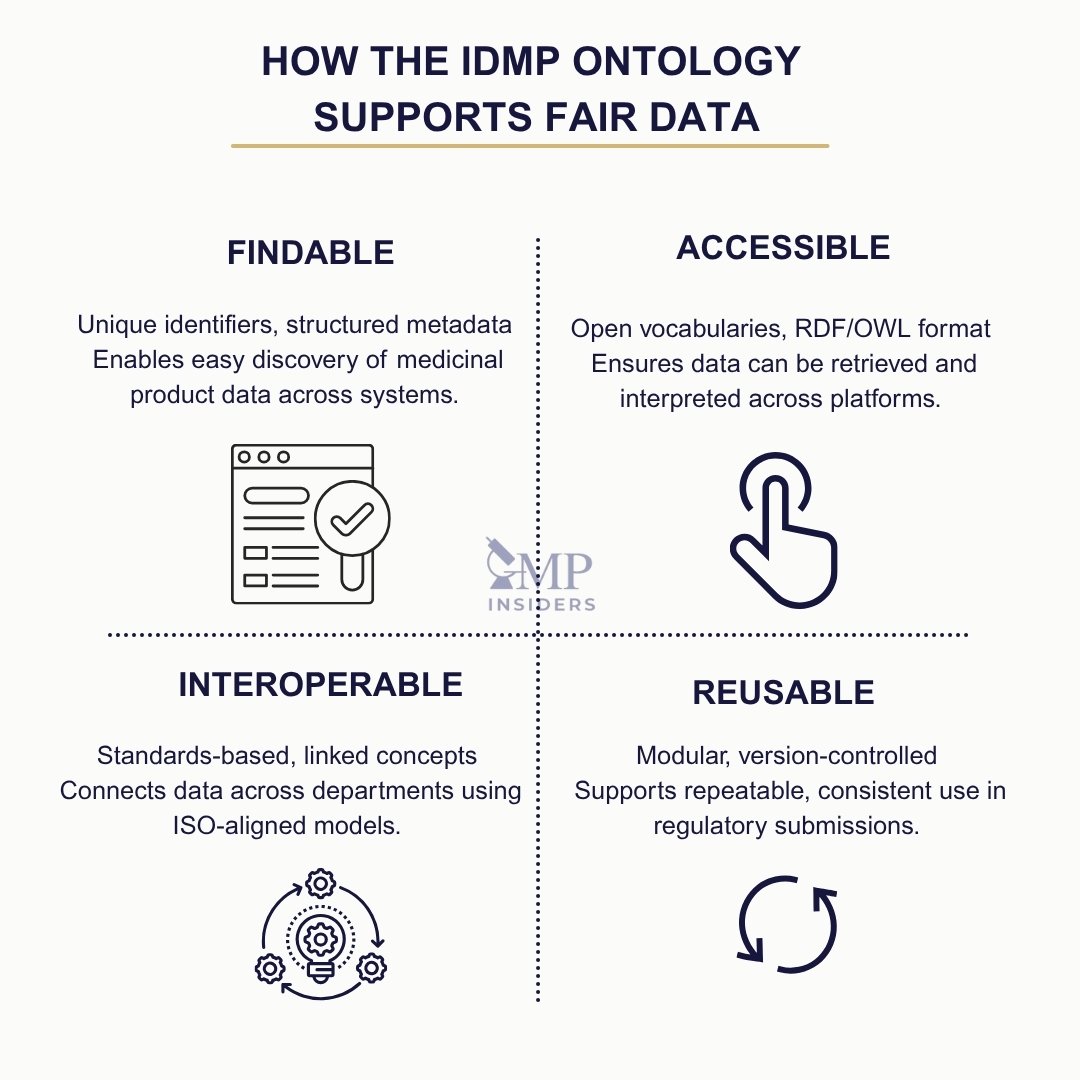
Aligned with ISO IDMP Standards
The ontology supports all five core ISO standards under the IDMP framework:
- ISO 11615:2017 – Health informatics — Identification of medicinal products — Data elements and structures for the unique identification and exchange of regulated medicinal product information
- ISO 11616:2017 – Health informatics — Identification of medicinal products — Data elements and structures for unique identification and exchange of regulated pharmaceutical product information
- ISO 11238:2018 – Health informatics — Identification of medicinal products — Data elements and structures for the unique identification and exchange of regulated information on substances
- ISO 11239:2023 – Health informatics — Identification of medicinal products — Data elements and structures for the unique identification and exchange of regulated information on pharmaceutical dose forms, units of presentation, routes of administration and packaging
- ISO 11240:2012 – Health informatics — Identification of medicinal products — Data elements and structures for the unique identification and exchange of units of measurement
It also incorporates ISO 21090, which standardizes data types commonly used in healthcare and regulatory submissions. This alignment ensures that internal data models can be directly mapped to regulatory requirements, such as the EMA’s SPOR and the FDA’s future IDMP structure.
Ontological Foundations
The structure is based on several recognized ontological libraries and vocabularies:
- BFO (Basic Formal Ontology)
- Commons Ontology Library
- MVF (Model Vocabulary Framework)
- LCC (Languages, Countries, and Codes)
- SPAR vocabularies
These foundations help ensure compatibility with other systems and support consistent terminology and relationships across datasets.
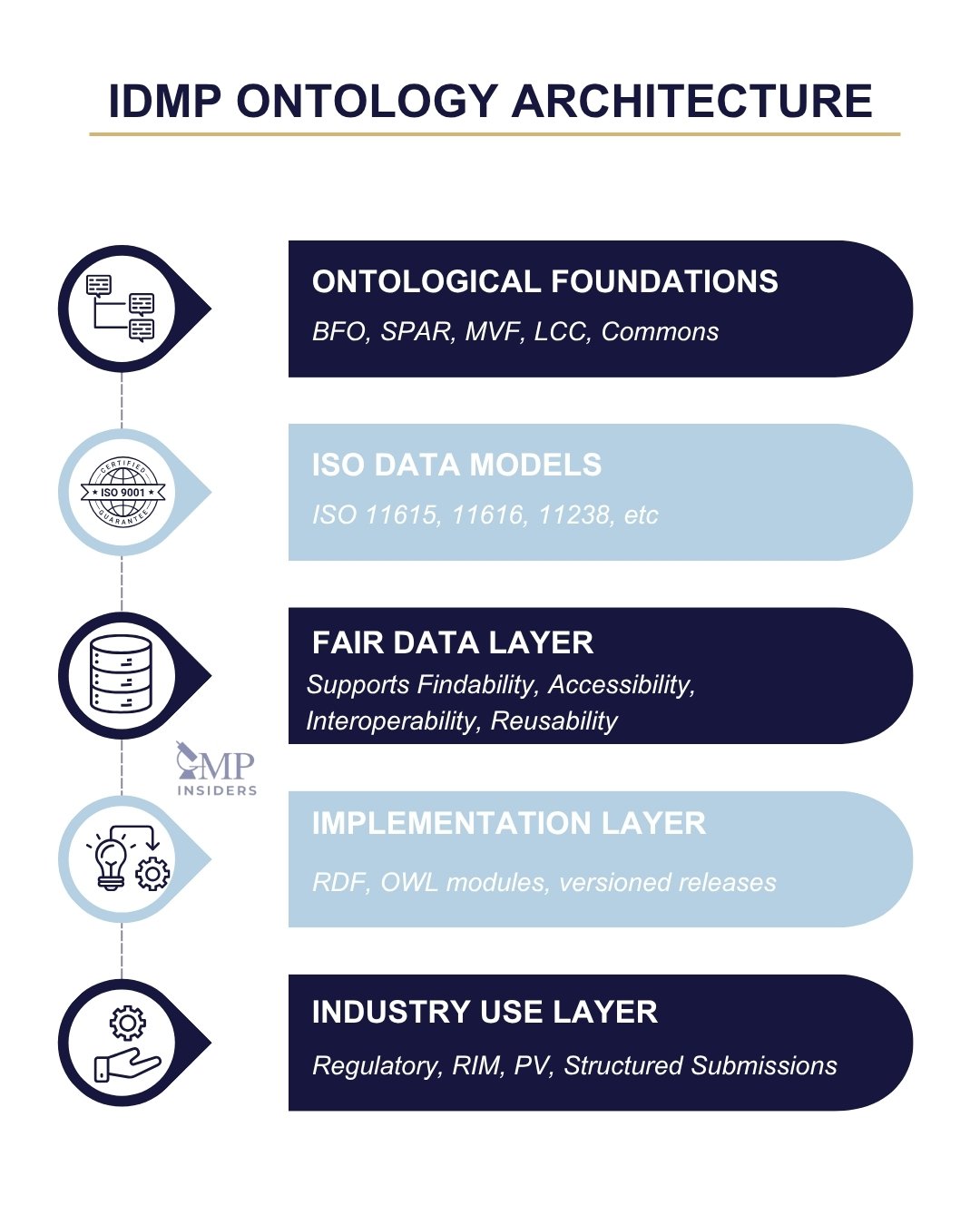
Format and Structure
The ontology is modular and organized by domains and subdomains, which allows flexible implementation depending on your organization’s structure. It is available in OWL and RDF formats and is released in two ways:
- Production versions, updated quarterly and tested for stability
- Development versions, updated continuously and suitable for piloting or integration testing
This structure supports gradual adoption and easy updates as regulatory requirements evolve.
Who’s Using It and Why It Matters Now
The IDMP Ontology isn’t a theoretical exercise; it’s already being adopted and tested by some of the world’s leading pharmaceutical companies. Organizations like Bayer, Novartis, Amgen, Pfizer, AbbVie, and Roche are actively involved in shaping and piloting their use through industry-wide collaboration.
At the center of this effort is the Pistoia Alliance, a not-for-profit consortium that has coordinated the development and release of the IDMP Ontology with support from regulators, pharma companies, and technology providers. Their initiative ensures that the ontology remains open, transparent, and aligned with evolving regulatory expectations.
Industry interest is growing rapidly. According to recent reports, nearly half of the surveyed pharmaceutical companies plan to implement the IDMP Ontology within the next year, and the vast majority see it as beneficial far beyond just compliance.
What If You’re Not Ready Yet?
Even if you’re early in your IDMP journey, understanding the ontology can help you:
- Spot gaps in your data structure
- Avoid building duplicate or siloed models
- Start conversations between regulatory and IT teams with a shared vocabulary
You don’t need to learn technical languages like RDF or OWL. The key is understanding that your data needs to evolve from lists and labels to networks of meaning — and that the IDMP Ontology is one tool to help guide that evolution.
Pharmaceutical organizations that treat regulatory data as a strategic asset, rather than just a compliance requirement, are better positioned for efficiency, adaptability, and digital transformation. The IDMP Ontology represents a step in that direction.
It doesn’t require technical expertise to see the value: a more transparent, more consistent, and more connected view of your product data. As the regulatory landscape becomes increasingly data-driven, those who adopt this mindset early will be ahead of the curve.
FAQs
Do I Need to Change My Existing Systems to Adopt the IDMP Ontology?
Not necessarily. The ontology can work alongside your existing systems by serving as a reference layer. It helps unify terminology and data structures without requiring a complete overhaul.
How Is It Different From a Traditional Data Model?
Traditional models store and label data, but ontologies define relationships and context. For example, they clarify that a pharmaceutical product contains a specific manufactured item and is associated with a particular regulatory submission.
What Kinds of Questions Can It Help Us Answer?
From identifying all products that contain a specific substance to tracing where a supplier’s material is used, the ontology enables detailed, queryable insights that support both compliance and operational decision-making.
Final Thoughts
The IDMP Ontology is more than just a tool for compliance. It represents a shift toward structured, intelligent data that aligns with both current regulatory needs and future digital transformation goals.
As more organizations recognize the value of connected, context-rich product data, the ontology will play an increasingly important role in the pharmaceutical industry’s data infrastructure.
Whether you’re just starting your IDMP journey or already working with structured data, now is the right time to become familiar with the IDMP Ontology. Understanding its structure and potential can help you avoid data silos, improve submission readiness, and build a foundation for smarter, more efficient data management.

